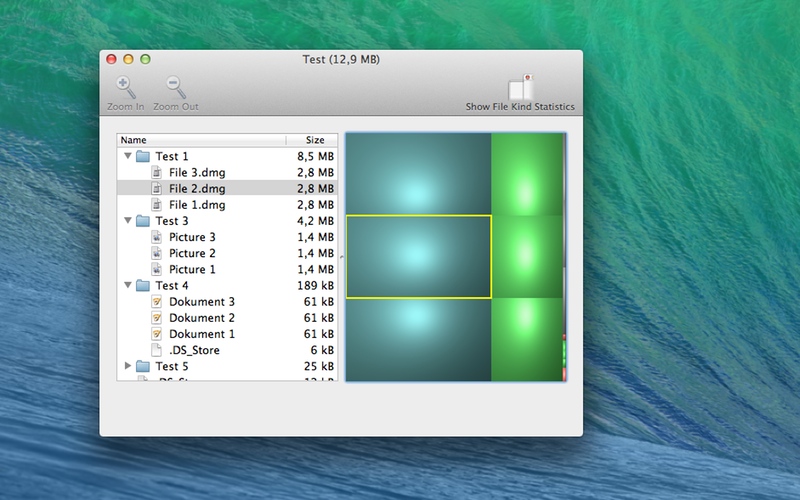

- #Disk inventory x for 10.12 for mac
- #Disk inventory x for 10.12 mac os
- #Disk inventory x for 10.12 install
- #Disk inventory x for 10.12 windows
#Disk inventory x for 10.12 for mac
That’s another reason why Outlook for Mac uses up so much disk space. OST), Outlook for Mac saves messages and attachments in many different files.
#Disk inventory x for 10.12 windows
Unlike Outlook for Windows (which has a single enormous data file. We used Disk Inventory X to look at the entire drive and see which folders took up the most space. Data is stored in Documents/Microsoft User Data then in ‘Identities’. Then drill down to /Data/ and three ‘Message’ folders:

~/Library/Group Containers/UBF8T346G9.Office/Outlook/Outlook 15 Profiles/Main Profile Outlook 2016 for Mac puts the data folders in the users Library folder We found a nifty and cheap tool to use HFS+ compression, but it’s disappeared. If you want to try HFS+ compression from the command line – check out here. The Apple supplied method is terminal command lines! That’s a right PITA and really strange for the usually user friendly Mac. Unfortunately, HFS+ compression isn’t easy to use. Note: macOS also has a feature called ‘Compress’ which is a different thing entirely. MacOS has a similar feature, HFS+ compression which has been available since the Snow Leopard release. The compression doesn’t save as much disk space as it once did because many file formats are now already compressed (e.g. It’s not used a lot on Windows computers now because hard drives have become a lot larger and cheaper. It’s easy to use and available on the Properties dialog for any file, folder or entire NTFS drive. NTFS Compress works seamlessly in the background. Windows users have a ‘Compress contents’ options to shrink the disk space used by files. Before you buy a new Mac or get a third-party drive upgrade, check out a somewhat hidden feature in the macOS – HFS+ compression. The result can be many gigabytes used up on a relatively small drive. In particular, the ability to only sync the most recent messages. Unfortunately, Outlook for Mac, even the latest Outlook 2016 doesn’t have some of the space saving options available to Office for Windows. Mac computers can have relatively small hard drives like 128GB or 265GB which Outlook 2016 for Mac can gobble up. Use a generic Agent installer (signed) package and the message won't be displayed.Outlook for Mac is a disk space hog but the macOS has a way to recover some of that. Use the Customer/Site specific Agent installer (unsigned) package and click Open, when the warning message is displayed.Ģ. To overide the Warning message, there are two choices:ġ. The package is custom generated on N-able N-central, so it cannot be signed with a N-able certificate. If the Partner is using a Customer/Site Specific Agent installer, the following Warning message message will be displayed: "Register the N-able N-central Agent" can't be opened because Apple cannot check it for malicious software. You can also use a Terminal command to set GateKeeper to permit installation.

If you have App Store or Anywhere selected on this screen, the prompts will not show to unblock the installation. This button only appears if you have selected to Allow apps downloaded from App Store and identified developers. This button is available for about an hour after you try to open the app. NOTE: You can also grant an exception for a blocked app by clicking the " Open Anyway" button in the General pane of Security & Privacy preferences. The app is saved as an exception to your security settings, and you can open it in the future by double-clicking it just as you can any registered app.
#Disk inventory x for 10.12 mac os
This feature is called GateKeeper, and starting in Mac OS 10.12 Sierra, it is not displayed by default in the Security & Privacy system preferences.
#Disk inventory x for 10.12 install
SolutionWhen you try to install an application that is not distributed through the App Store on Mac OS 10.12 and higher, you may get a warning dialogue box and the install will fail.


 0 kommentar(er)
0 kommentar(er)
